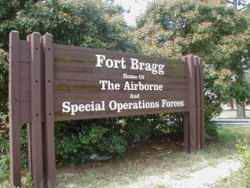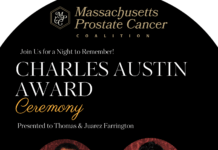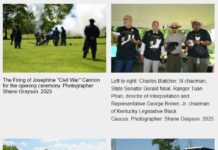By: Charles Blatcher, III
Chairman, National Coalition of Black Veteran Organizations
History is important. The importance magnified by the current debate over whether Black History should be in the public education curriculums. Our advocacy over the past four and a half decades is a testament to the degree of importance we place on the subject. We view the bases name changing process as an opportunity to recognize the importance of Black Military History.
We have voiced concerns about the process used in the selection of names for the Army Bases. This paper is a clarification of our opinion as it relates to the subject. Do we expect our concerns will receive thoughtful consideration or disregarded as nothing more than a nuisance? We will not be surprised or disappointed in either case. However, our primary concern is letting the Black community understand why we disagree with the Commission’s recommendations.
We submitted recommendations regarding process along with the profiles of the five individual names we offered for consideration. Our suggestion, if implemented, will have eliminated the politics, and followed Army Regulation to only memorialize the deceased. It would have eliminated the competition among a field far too broad for fair evaluation. The following individuals stand without comparison. They represent the first in United States Army Black Military History:
– Brigadier General Charles Young, First Black Colonel in Army History. Highest ranking Black Officer in
the Armed Forces from 1894 to his death in 1922.
– Brigadier General Benjamin O. Davis, Sr, First Black General in US Military History- 1941
– General Roscoe Robinson, First Black Army 4 Star General in US Army History – 1984
– Brigadier General Hazel W. Johnson, First Black Woman General – 1979
– Major General Charles C. Rogers. Only Black General recipient of the Medal of Honor – 1968.
Despite all eliminated in the process, we stand by the choices on historical merit. With all our nominees being Generals, there would be no need to change Army tradition in naming garrisons honoring general officers. The bases recommended for name changes honor Confederate Generals. The title General carries a broader inference than merely acknowledging rank. It recognizes and lends honor to their positions of leadership. To abandon the tradition now that there are women and minorities included in the naming consideration trivializes the new honorees.
Second, it is important to point out another fact regarding the pairings of names. Fort Gregg – Adams is the only hyphenated recommendation. Despite how the Commission presents it, there will not be a base named Fort Lieutenant General Hal – Julia Moore. There will be a Fort Moore, singularly recognizing Lieutenant General Hal Moore. The misleading presentation is a distraction from the pairing of Gregg and Adams. They pair for obvious reasons, both are Black, and it opens the slot for a Fort Liberty.
It is insulting to just pair the two Black honorees. The exception diminishes the honor and cast dispersion on the validity of the sincerity of the recognition. Instead, we suggest hyphenating the names of all nine bases. It would offer the opportunity to honor eighteen distinguished patriots as opposed to the nine offered under the Commission’s recommendation. Such action would also remove the stigma of being the only hyphenated pair, while eliminating the slot for a Fort Liberty. Highlighted are names we offer as examples of compatibility of name-sharing with a brief description of why:
– Fort Gordon, Georgia – Fort Eisenhower – Bradley – General Dwight Eisenhower led ground, air, and sea forces on D-Day, helping to liberate Western Europe and defeat Nazi Germany. He was elected president in 1952. General Omar Nelson Bradley was the first chairman of the Joint Chiefs of Staff. Senior Army Officer during and after World War II.
– Fort A.P. Hill, Virginia – Fort Walker – Williams – Dr. Mary Edwards Walker, became the Army’s first female surgeon in 1863. Walker was a strong advocate for equality, including abolition and women’s rights. Cathay Williams fought in the Civil War in Union Army disguised as a man 1866. She is the only known women Buffalo Soldier.
– Fort Benning, Georgia – Fort Patton – Moore – Lieutenant General George Patton commanded the Seventh and Third Armies in WWII. Lieutenant General Hal Moore served in Vietnam, taught at West Point, led the transition of armed forces to all-volunteer service and worked to quash racial strife among soldiers.
– Fort Hood, Texas – Fort Robinson – Cavazos – General Richard Cavazos is the first Hispanic American 4 Star General. General Roscoe Robinson was the First Black 4 Star General in United States Army History.
– Fort Lee, Virginia – Fort Gregg – Young – Lieutenant General Arthur J. Gregg was the First Black 3 Star General in United States Army History. General Gregg have been acknowledged by the United States Army for his mastery of Logistics. Brigadier General Charles Young was the highest-ranking Black Officer in the Armed Forces in the early 1900’s. He was the first Black Colonel in United States Army.
– Fort Bragg, North Carolina – Fort Johnson – Adams – Brigadier General Hazel Winfred Johnson is the First Black Women General in the history of the United States Army. Lieutenant Colonel Charity Adams commanded the first unit of African-American women to serve overseas.” Her mission involved leading the 6888th Central Postal Directory in England.
– Fort Polk, Louisiana – Fort Rogers – Johnson – Major General Charles Rogers is the only Black Flag Officer recipient of the Medal of Honor. Sergeant William Henry Johnson, is a Medal of Honor recipient from World War I.
– Fort Pickett, Virginia – Fort Parker – Barfoot – Brigadier General Eli Parker the first Native American flag officer in the United States Army. He was the Adjutant to General Ulysses S. Grant during the Civil War. Tech. Sgt. Van T. Barfoot, served in World War II, the Korean War, and the Vietnam War. He made headlines in 2009 when he flew the American flag at his home, against the wishes of his local homeowner’s association.
– Fort Rucker, Alabama – Fort Davis – Novosel – Brigadier General Benjamin O. Davis, Sr. was the first Black General in the Regular United States Army. Chief Warrant Officer 4 Michael J. Novosel Sr., served in World War II, the Korean War, and the Vietnam War. He flew 2,543 medevac evacuation missions
In conclusion, there is a saying that you cannot put the squeezed out toothpaste back in the tube. However, the parties who made the mess can tidy up behind themselves. This could be an opportunity to turn this fiasco into a teachable moment in American History. Will it happen? Time will tell. It is now in the hands of Secretary of Defense Lloyd Austin. We ask you to support our recommendations by contacting the Secretary’s office at (703) 545-6700 or email the Commission at pao@thenamingcommission.gov. Together, we can make a difference.
###### Contact information: cnmmmf@aol.com ######







